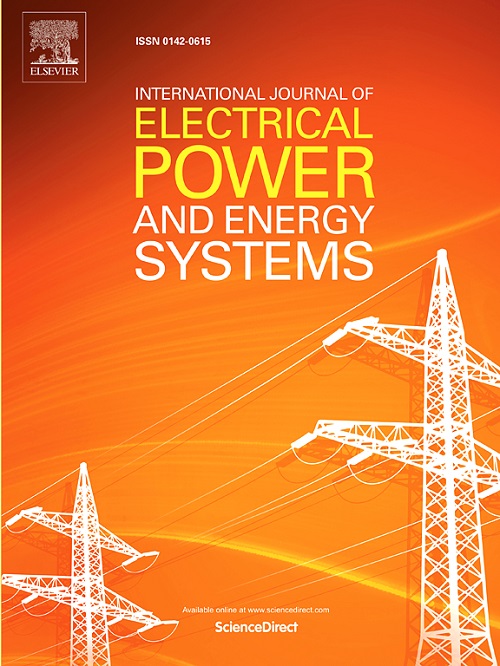采用保形预测和特征重要性选择的风速预报方法
IF 5
2区 工程技术
Q1 ENGINEERING, ELECTRICAL & ELECTRONIC
International Journal of Electrical Power & Energy Systems
Pub Date : 2025-05-12
DOI:10.1016/j.ijepes.2025.110700
引用次数: 0
摘要
风能是一种新兴的可再生能源,在向更可持续的能源系统过渡中发挥着重要作用。风力发电的变化是这种能源面临的主要挑战之一。风力预报方法对于规划和运营风力发电场至关重要,但由于风的动态特性和当地因素的影响,这种方法很复杂。本文用与风速有关的不确定性度量来评价时间序列的短期预报。该方法考虑了保形预测方法,并基于Shapley值对给定重要程度的特征进行了最优选择。此外,将使用树结构Parzen估计器的贝叶斯优化(BO-TPE)来调整模型的超参数。结果表明,将变分模态分解(VMD)与奇异谱分析(SSA)相结合馈入保形预测模型可以提高模型的性能。以德国betenberg数据集为例,最佳模型为无部分拟合的Light Gradient Boosting Machine (LGBM)-VMD-SSA,其均方根误差(RMSE)标准为0.25031,覆盖率测度为94.4%,宽度测度为1.008。当考虑来自巴西Limoeiro的数据集时,最佳模型也是无部分拟合的LGBM-VMD-SSA,其RMSE为0.21597,覆盖率为90.3%,宽度为0.678。SHapley加性解释(SHAP)使模型结果具有可解释性。本研究中提出的模型经BO-TPE超调,基于SHAP可解释的结果,可用于预测风速和发电量。本文章由计算机程序翻译,如有差异,请以英文原文为准。
Wind speed forecasting approach using conformal prediction and feature importance selection
Wind energy is a rising renewable energy source that plays an important role in the transition to a more sustainable energy system. Variation in wind power generation is one of the main challenges facing this energy source. Wind forecasting approaches are essential for planning and operating wind farms, but are complex due to the dynamic nature of the wind and the influence of local factors. This paper evaluates short-term forecasting of time series with a measure of uncertainty associated with wind speeds. The proposed method considers the conformal prediction approach and, based on Shapley values, uses optimal selection of features given their importance. Furthermore, a Bayesian Optimization with Tree-structured Parzen Estimators (BO-TPE) will be used to tune the hyperparameters of the models. The results showed that using Variational Mode Decomposition (VMD) allied with Singular Spectrum Analysis (SSA) to feed into a conformal prediction model improved the performance of the model. Taking into account a Beutenberg data set, Germany, the best model was Light Gradient Boosting Machine (LGBM)-VMD-SSA without partial fit, resulting in a root mean squared error (RMSE) criterion of 0.25031, coverage measure of 94.4%, and width measure of 1.008. When considering a dataset from Limoeiro, Brazil, the best model was also LGBM-VMD-SSA without partial fit, resulting in an RMSE of 0.21597, a coverage of 90.3%, and a width of 0.678. SHapley Additive exPlanations (SHAP) bring explainability to the model results. The models proposed in this study, hypertuned by BO-TPE with interpretable results based on SHAP, can be useful in predicting wind speed and power generation.
求助全文
通过发布文献求助,成功后即可免费获取论文全文。
去求助
来源期刊
CiteScore
12.10
自引率
17.30%
发文量
1022
审稿时长
51 days
期刊介绍:
The journal covers theoretical developments in electrical power and energy systems and their applications. The coverage embraces: generation and network planning; reliability; long and short term operation; expert systems; neural networks; object oriented systems; system control centres; database and information systems; stock and parameter estimation; system security and adequacy; network theory, modelling and computation; small and large system dynamics; dynamic model identification; on-line control including load and switching control; protection; distribution systems; energy economics; impact of non-conventional systems; and man-machine interfaces.
As well as original research papers, the journal publishes short contributions, book reviews and conference reports. All papers are peer-reviewed by at least two referees.

 求助内容:
求助内容: 应助结果提醒方式:
应助结果提醒方式:


